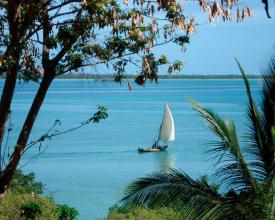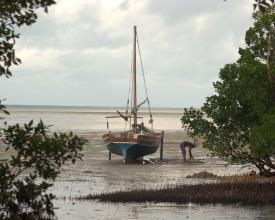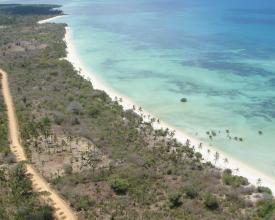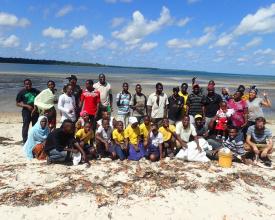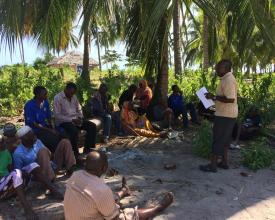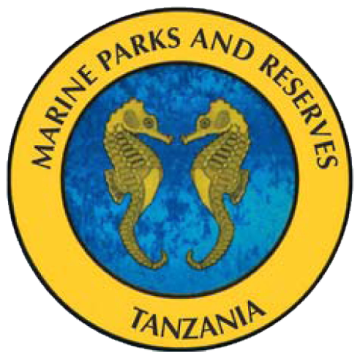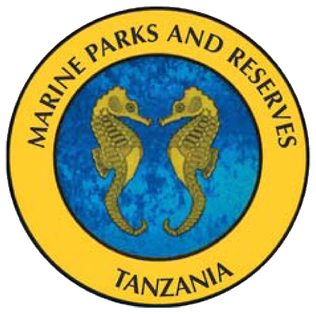
Mafia Island Marine Park: a success story of inclusive governance
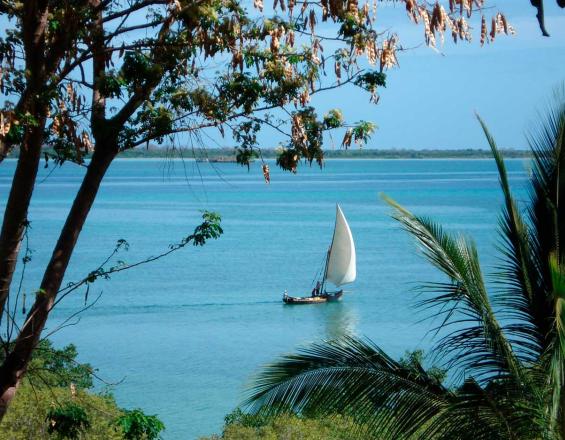
The Mafia Island Marine Park (MIMP) was established in 1995. It was the first of its kind in Tanzania mainland. The local community lives within the park and their livelihoods depend mostly on the park's marine resources. Before its creation, they observed increasing pressure on their fisheries resources due to migrant fishers using illegal blast and pull net fishing methods. Both the community and the government saw the need to mitigate the decline and took action. The Park adopted early on a collaborative management and inclusive governance system, as well as prioritized socio-economic benefits for the local inhabitants. MIMP is thriving, being a pristine place for fish sanctuary and high tourism hub.
Context
Challenges addressed
At the beginning, the village communities had negative attitude against the Park, and the level of understanding about natural resources conservation was low. The inhabitants of the islets lacked access to social services, such as dispensary or clean water supply. A large number of school dropout was noticed.
There were also a few environmental challenges, such as:
- Increased migrant fishers using destructive and illegal fishing practices, such as blast and pull net fishing
- Illegal coral mining
- Excessive unregulated mangrove harvesting for dhows (fishing boats) and poles for construction
Location
Process
Summary of the process
The inclusive governance and participatory management regime of MIMP has ensured a strong foundation for community engagement in conservation and ecosystem restoration, and trustful relationship among the different management bodies and village communities. The Park provides tangible benefits to its inhabitants, who in turn participate actively in decision-making and conservation activities. Environmental education, awareness raising and alternative livelihoods trainings and development enhance understanding and interests in natural resources management.
Building Blocks
Inclusive governance and participatory management
The MIMP is managed by the Marine Parks and Reserves Unit (MPRU), which is the government office in charge of marine protected areas, together with the Village Liaison Offices, that were put in place in each of the 11 villages of the Park.
The participatory management approach applied by both parties, has built a strong foundation for communities members to participate in the decision-making. Different methods were applied to foster broad participation, such as meetings with VLO and other stakeholders, focus group discussions with different resource user groups, special interviews and discussions with key and influential people.
Enabling factors
- Good leadership among MPRU staff and village representatives.
- Transparency and consistent sharing of information for combating illegal fishing.
- Environmental education and awareness raising.
- Trust built with communities members.
- Communities needs taken in account by the management bodies.
Lesson learned
- Communities need to see impacts, and visible actions. Once we fulfilled their needs, trust will araise. From there, everything is possible.
- Most of communities understand about the park's action, and engaged with the MPRU, in raising awareness and management activities. Community members inform and raise consciousness among their peers.
- Trust goes both ways. MPRU needs to trust the community members as well (e.g. permits delivery for mangrove wood use).
Balancing Mafia Island's inhabitants' needs and conservation imperatives
The MIMP was established primarily to conserve biodiversity, and end highly destructive fishing practices used by migrant fishers. It was also in the interest of the local fishers. However, it was essential to take in account the inhabitants' needs and reliance on the natural resources. So, on one hand, the MPRU staff provided environmental conservation and awareness raising on resources use & management, and on the other hand, they improved the infrastructures for schooling, health and water supply. Law enforcement is also applied towards culprits and community members reluctant to follow the rules. In turn, the villagers who respect them are encouraged and praised.
Enabling factors
- Support for children school fees so that they keep going to school.
- Village level infrastructures, such as dispensaries, classrooms, water supplies.
- Exchange visits organised for MIMP inhabitants to learn about success stories, such as seaweed women farmers in Zanzibar, in conservation activities in Mozambique
- Training on Community-based Natural Resources Management provided to community men and women, by designated college teachers.
- Benefit sharing mechanisms from conservation (total collection from tourism entry fees).
Lesson learned
- Once communities see the benefits given by the Park, they fully engage and participate. Benefit sharing mechanism is key for success.
- People see that conservation brings benefits in terms of resources, such as good fish catch. It has attracted migrant fishers. However, local fishers engage and voluntarily report on illegal incidences, or migrant fishers without permits. Each village decides how many migrants they can accommodate.
- Once the students complete school, thanks to scholarship and sponsorship, they come back and work as village leaders, contributing towards putting effort in conservation, as well as their parents who see the benefits, also engage in conservation activities.
Benefit sharing mechanism and alternative livelihoods
The MIMP revenues from tourism and other activities are used to support the villagers in many different ways, such as:
- Pay school fees.
- Build village level infrastructure.
- Organise learning exchanges, site visits.
- Alternative livelihoods development, such as beekeeping, seaweed farming, dhow construction.
There is a clear cut of 20% net revenue that is allocated to the VLCs council for supporting actions in each village.
Enabling factors
- Transparency and accountability.
- Trust.
- Collaborative planning and management: communities can choose the infrastructures they need.
Lesson learned
- The more transparent we are, the more we provide benefits to the communities, the more they engage in conservation activities.
Impacts
Communities have gained ownership on coastal and marine resources. Therefore they actively participate in:
- marine resources monitoring: coral reefs, fish catch, beach
- law enforcement patrols
- awareness raising on conservation issues through environmental education programmes
Gender well mainstreamed in conservation activities through equal distribution of marine resources and social benefits among the communities, inclusion and participatory management.
Environmental impacts:
- Mangrove restored in depleted areas
- 98% decrease of illegal fishing practices
- Increased fish catch, and fisheries resources overall, for both artisanal and commercial fishers
Social benefits:
- 670 boys and girls from poor families assisted with payment of school / college fees
- Village level infrastructures: 4 dispensaries (4,000 people benefit, including a health center with maternity rooms), classrooms (600-800 students benefit), more than 7 water supply (4,000 people benefit)
Beneficiaries
- Octopus fishers
- Seaweed farmers
- Artisanal fishers
- Pole cutters
- Coral miners
- Fish mongers
- Hoteliers
- Local Government Authority
- Tour guide and Operators
- Local community within the park
Story
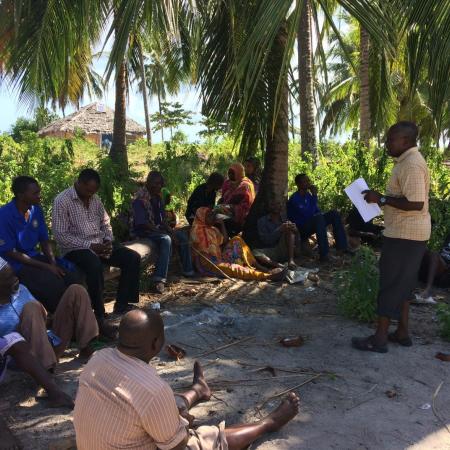
The Mafia Island Marine Park is a pristine place for fish sanctuary hence making it a productive fishing ground as well as a popular tourism destination. Many people from within and park vicinity depend on these marine resources for their livelihood.
But, due to an increased fishing pressure from migrant fishers who were using illegal blast and pull net fishing, the resources were starting to be depleted and caused many people to suffer. This aroused a need for an immediate solution. Both the community and government took action together.
MIMP was then established with its immediate goal being to conserve biodiversity. The first and foremost move of the park was to combat illegal blast fishing, of which 98% was eliminated, and disseminate environmental education to raise awareness on conservation issues. As a result, the community sought to collaborate with the park after they understood the goals of the park, both pro and cons.
As it strived, the park continued to benefit the community through the establishment of Village Lisaison Committee (VLC) offices in each village, and other infrastructures such as dispensaries, classrooms and water supplies.
Other ideas and recommendations for promoting conservation in the park are:
- Increase exchange programmes to improve environmental education
- Support the fishers in the park with high technology fishing skills and facilities to enhance sustainable fishing
- Promote youth environmental clubs and marine conservation clubs
- Include environmental conservation and protection in students’ curriculum.
